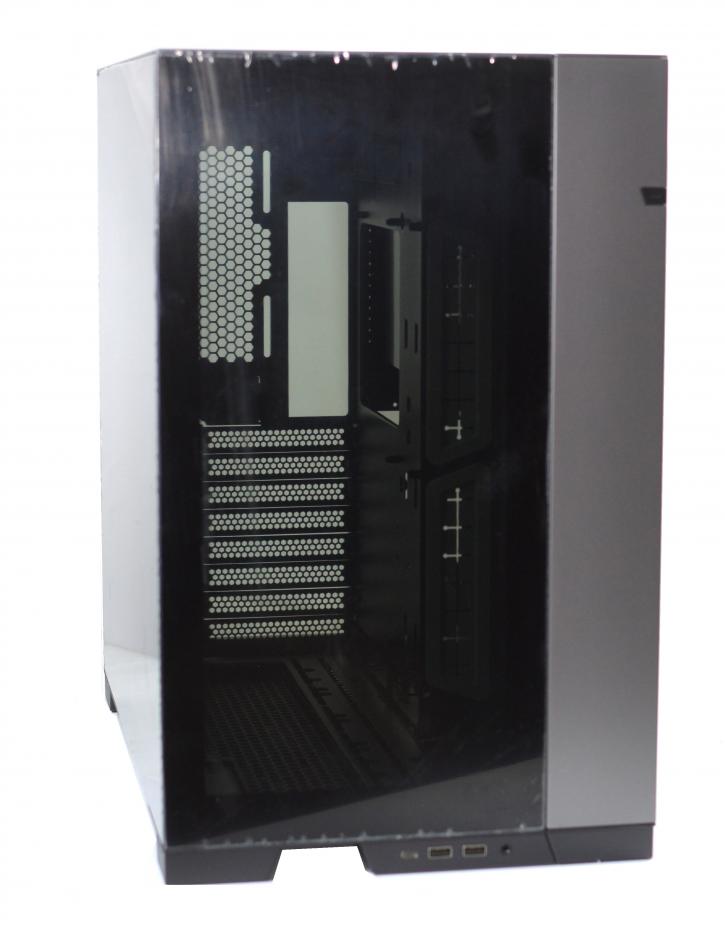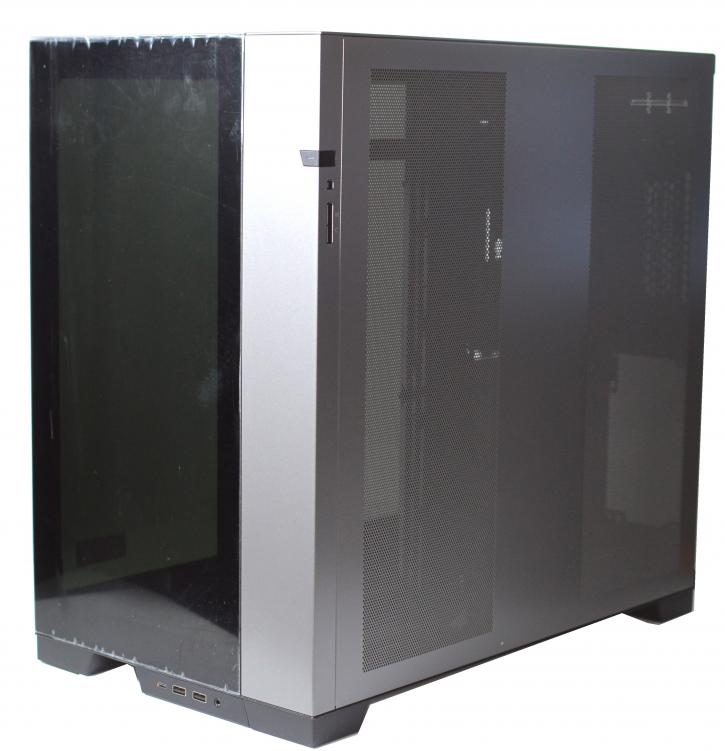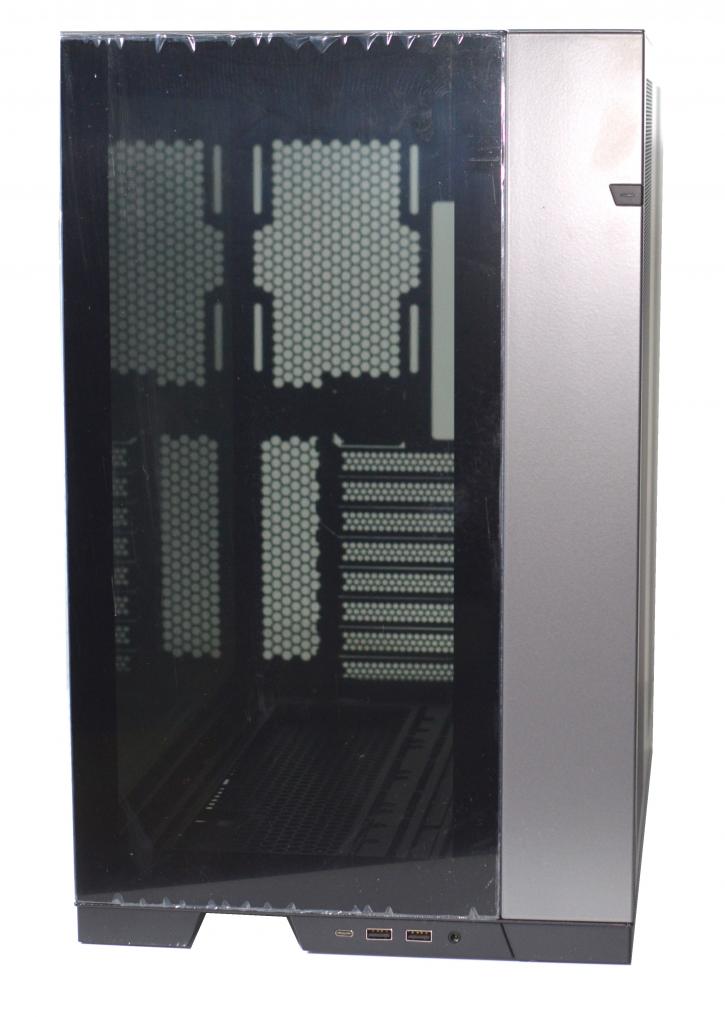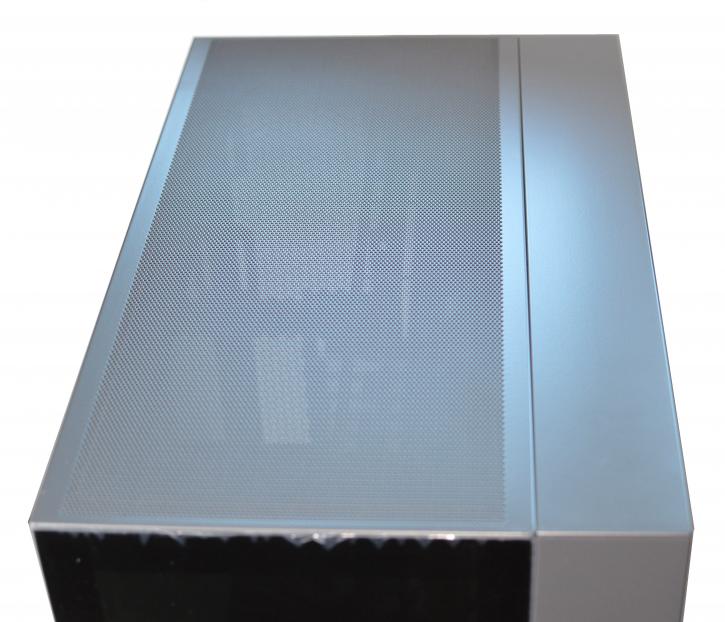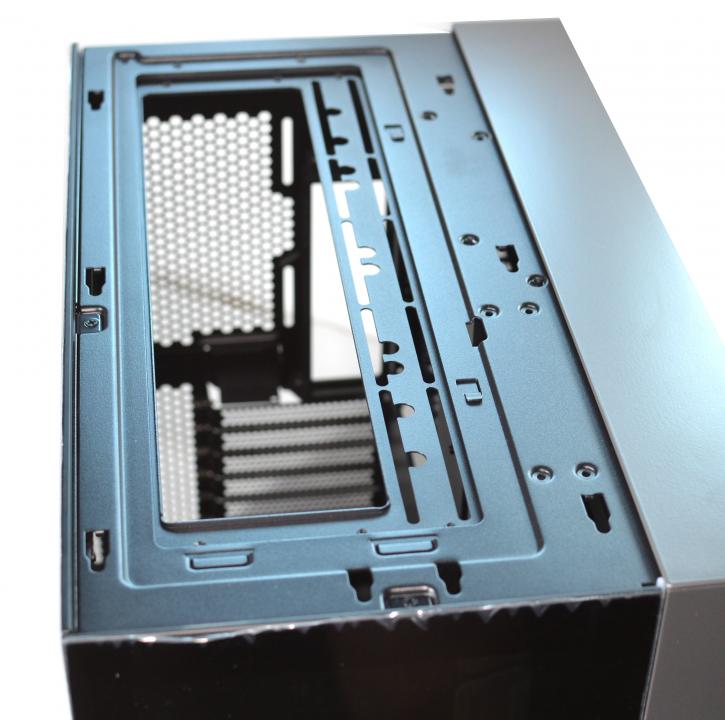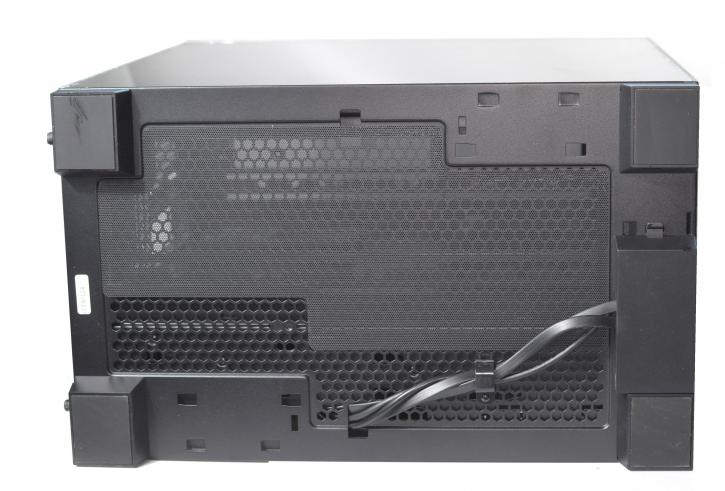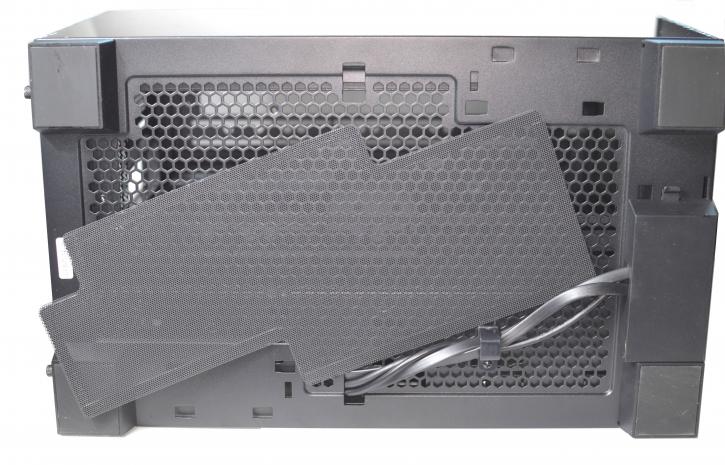Product Showcase - Exterior
Product Showcase - Exterior
The chassis makes an excellent first impression, as it’s a great-looking, mid-sized tower. The chassis has a charming design; nothing screams out loud or is overdone, and it resembles Lian-Li. We have two compartments, one on the left with tempered glass panels and one on the right, behind a brushed aluminum element. The left side panel is tempered glass, clean without visible mounting screws. The edges are painted to match the color variant.
The opposite side panel is steel, with large perforation for better ventilation, which is only interrupted in the middle of the housing by an approximately 11 cm wide strip. The overall quality is excellent. The following motherboard form factors are supported:
- E-ATX (width up to 280 mm)
- ATX
- uATX,
- mini ITX,
It’s a mid-size chassis, measuring 465 × 285 × 459 (L x W x H), which amounts to 60.8 l of volume. The weight is about 12.7 kg, enough to make the case stable without the hardware.
The front has a design with a glass panel to see the interior. On the right edge of the front, as with the Lian Li O11 Dynamic, there is a metal strip about 6.5 cm wide and painted gray. It houses the power button and a switch for the RGB lighting. Inspired by the style of the O11D XL, an LED strip runs between the glass and brushed aluminum of the front panel. In addition to controlling the RGB effects via the chassis button, the LED strip can also be synced to the motherboard or controlled via L-Connect. The LED strip can display seven static colors by clicking the C button. Static Color: Red, Green, Blue, Yellow, Sky Blue, Purple, White. By clicking the M button, the user can choose between 7 built-in lighting effects or go to the 8th mode to control the LED strip via the UNI HUB or motherboard (depending on which device the I/O is connected to)—pressing the M button 3 seconds while on the 8th mode turns off the LED.
The top panel immediately reveals that we have a chassis at hand that allows for quite a bit of airflow - should you require it, of course. Removing the left cover (after loosening the corresponding knurled screw on the back of the housing, these can be easily pushed backward and released separately) - makes it possible to remove the glass panels easily. These are pressed outwards at the upper edge and can then be removed upwards.
The underside of the Lian Li O11 Dynamic EVO also has a sizeable hexagonal ventilation grille, which is supposed to protect the interior from dust with an additional, magnetically attached dust filter.
The front I/O is attached to the front of the base plate. It can be easily removed and repositioned to the right rear and left front edge of the bottom of the chassis. You may also have to move the clamp depending on where the I/O panel is located. We have plastic feet which are covered with rubber.

